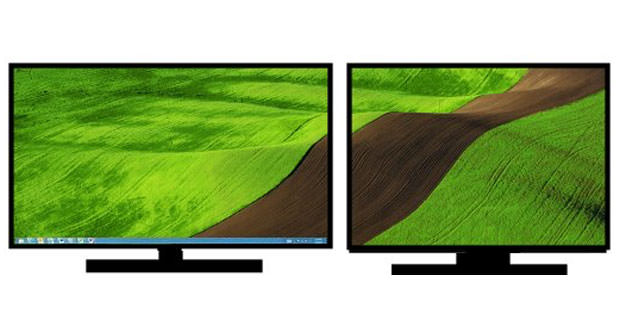How to use a computer with two monitors
The common user of a computer is satisfied with a single monitor in carrying out routine operations related to navigation and the use of the PC for work, school or simple entertainment matters.
But for those who, again for reasons related to working, school or even just for pure gaming fun, want to connect two or more monitors to the PC, in order to obtain a decidedly more rewarding experience in terms of using multimedia content, the question is crucial.
For the uninitiated, a connection of this type is perfectly feasible and takes on different characteristics depending on the type of result to be obtained: the dual screen can be characterized by the simple division of the monitor into two distinct parts, in order to accommodate, for example: the processing and use of two different software, or by the actual connection of two (or more) separate monitors each hosting equally different screen.
So let’s see how to use a computer with two monitors.
Requirement :
- VGA, HDMI, DVI, outputs
- VGA, HDMI, DVI cable, or VGA-HDMI adapter
- Video card with dual output
- Portable or desktop PC
- Any operating system
The presence of the VGA port
First of all, if you have a portable PC, it is good to specify that the connection with a second monitor is feasible through the use of the video outputs, provided that among these there is at least one VGA port (Video Graphics Array). Once the actual presence of this port has been verified, some conditions relating to the characteristics of the monitor to be connected must be verified.
The graphic outputs of the second monitor
Hardware check is not complete. After checking the presence of the VGA output in the main PC, it will be necessary to check the condition of the second monitor, the one that will be affected by the connection.
The monitor in question must have ports available for connection, usually located on the back of the monitor. The ports must accommodate at least the graphic outputs such as VGA, DVI and HDMI, in order to guarantee the user a wider spectrum of possibilities in order to connect the monitor itself to the main PC.
Fist Step
There are several procedures for making the connection between a computer (portable or desktop) and a secondary monitor, but in the guide in question, we will proceed with the use of a VGA cable. This cable is usually supplied with the purchase of the monitor itself, so it should not be necessary to buy it separately.
In any case, if this is not present inside the package, it will have to be purchased. We insert well, one end of the cable in the input port and the other in that of the laptop, without practicing unnecessary forcing, and turn on both devices.
If the monitor does not automatically recognize the connection source, we use the PC Function key to detect the dual screen. If the appliance is equipped with a remote control, we also press the Source button, so that we can locate the correct input.
The connection with the operating system
When the operating system loads, you will have two duplicate screens, one to be kept close and the other to be viewed remotely. At this point, it will be possible to configure the second as an extension of the first by adjusting the screen settings: in Windows systems Start button Settings > Control panel > Screen > Property > Identify.
The connection with a fixed PC
If, on the other hand, the computer is a fixed one, we must check that the graphics card has more than one output; identify the type (VGA, HDMI, DVI). If necessary, prepare an adapter for the VGA cable and insert it in the respective slots. In the attached photo, the video card has two inputs: VGA and DVI which allow connection to two monitors.
For the rest, it will be necessary to proceed as described in the previous steps, i.e. to recognize the second screen, configure it as a duplicate or as an extended desktop and enjoy the show.

